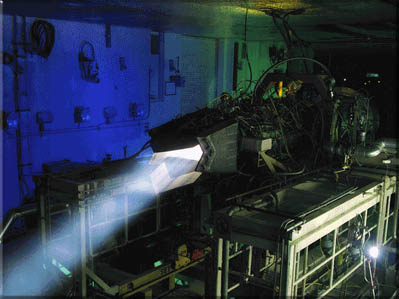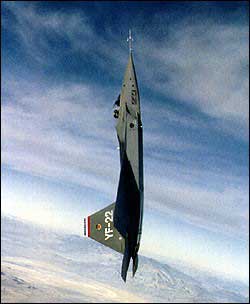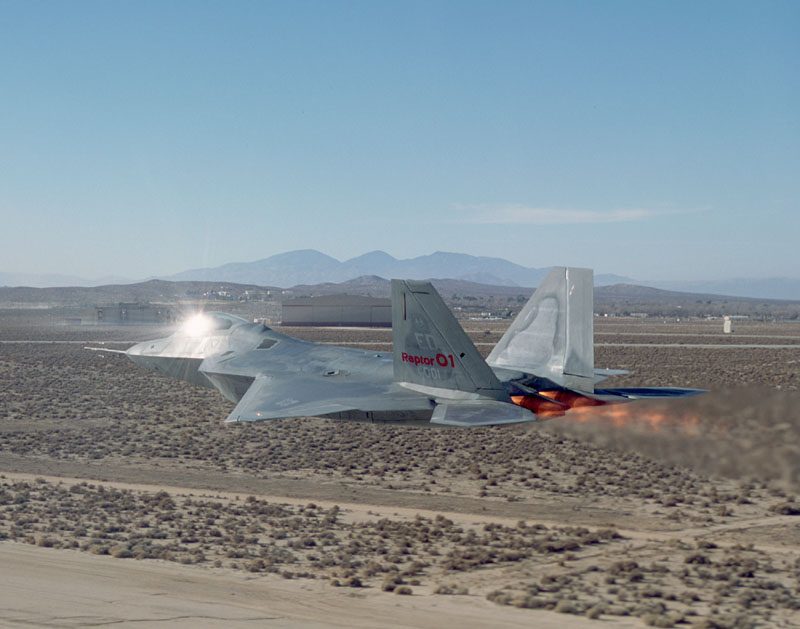|
F-22
Turbofan Extras
Afterburners
The main idea behind a jet engine afterburner
is to add more thrust (up to 50% or more) without adding much weight or
complexity to the engine. An afterburner injects fuel directly into the
exhaust gas that has already left the combustion chamber. This heats
and expands the exhaust gas further, and that is what increases thrust.
However, the downside of afterburners is that they dramatically
increases fuel
consumption. The two afterburners on the Pratt
& Whitney
F119-PW-100 can push the F-22's cruising speed of 1,140 mph to a top
speed of 1,600 mph in just a few seconds.
http://www.patricksaviation.com/photos/Manolo/10588/
http://www.1000pictures.com/view.htm?caircraft/fighter+fraptor_5000.jpg+x1024+y768
The F-22 flying
with full afterburners (left). Notice the red hot exhaust gas that is
coming out of the engine due to afterburners heating and expanding the
exhaust gas. The F-22 (right) is flying without
afterburners, and there is no red hot afterburner exhaust gas coming
out
of the engine.
Thrust Vectoring Technology
The F-22 has 2-D thrust vectoring
technology, which means that the thrust coming out of the turbofan
engines can be aimed, or vector, up to twenty degrees up or down. This
increases maneuverability, and allows the aircraft to
perform at an angle of attack of over sixty degrees, which is an angle
of attack thought untouchable until now.


http://www.f-22raptor.com/af_engines.php
http://www.f-22raptor.com/af_engines.php
The
Pratt
& Whitney
F119-PW-100 during an engine test (left). The same engine vectoring
exhaust gases downward (right).

http://www.area51zone.com/aircraft/f22.shtml
The
YF-22 (a prototype of the F-22) using thrust vectoring to fly, without
stalling, at an angle of 110 degrees (notice the position of the
horizon). This is an amazing angle of attack, one that the F-15, F-16,
and F-18 cannot achieve for long durations. The F-22, in this example,
can sustain this position by angling the thrust vectors downward.
|




